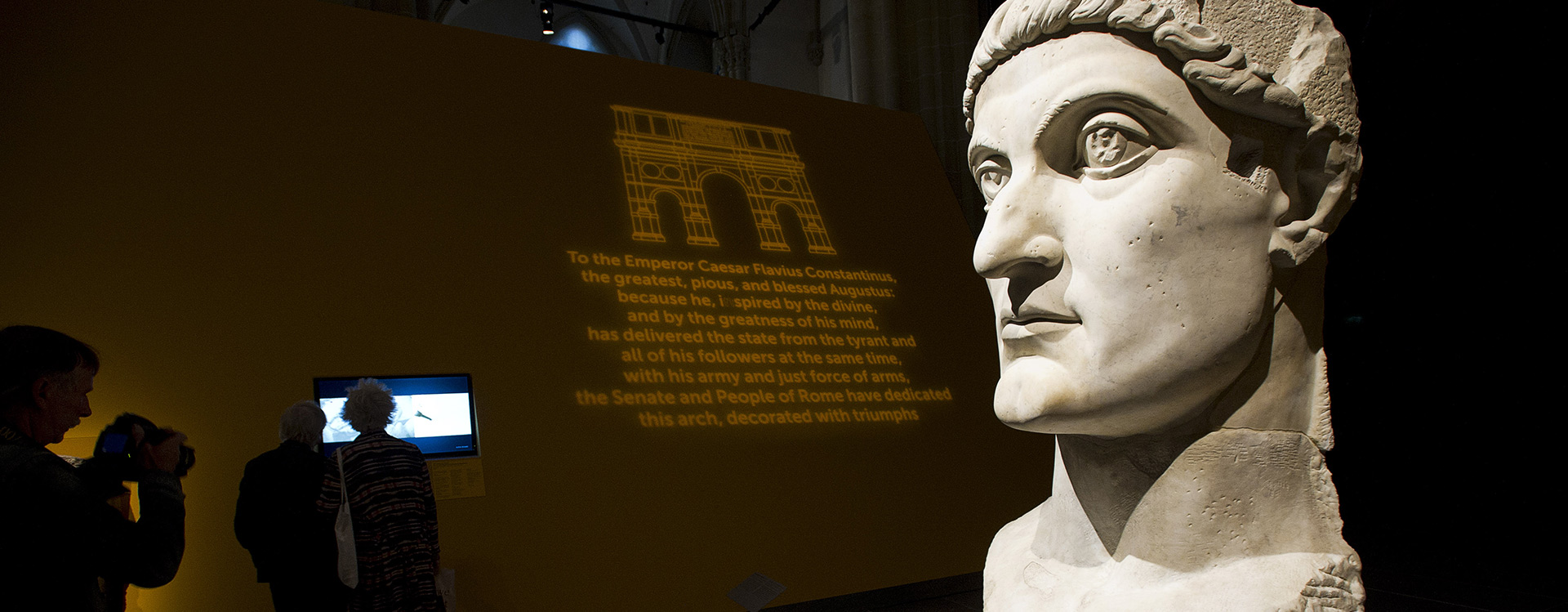150603 Exhibition Rome. Emperor Constantine’s Dream in De Nieuwe Kerk Amsterdam
Rare Roman treasures in the Netherlands for the first time
3 October – 7 February 2016
In the autumn of 2015 unique art treasures will be visiting De Nieuwe Kerk Amsterdam for the exhibition Rome. Emperor Constantine’s Dream. Art Treasures from the Eternal City. Loaned by institutions such as the Vatican Museums these will illustrate one of the most fascinating themes from antiquity: the transformation of Rome in the fourth century AD from a multi-religious imperial capital full of temples with colossal statues of the emperor into the centre of papal power dominated by churches with crosses. Christianity’s evolution in a relatively short time from a small faith community into the dominant religion, of crucial influence on the development of the Western world, is an astonishing success story. A rapid change in its fortunes that can largely be attributed to a single person: Emperor Constantine the Great.
From 3 October De Nieuwe Kerk will present precious artefacts never previously displayed in the Netherlands. Among the pieces coming to Amsterdam is the renowned fourth-century marble sculpture of The Good Shepherd, a masterpiece from the Vatican Museums, plus Roman mosaics, frescoes, sarcophaguses, paintings and the iconic right hand from one of the colossal statues of Constantine in the Capitoline Museums.
The exhibition has been created in a collaboration between Professor Eric Moormann, Professor Sible de Blaauw and three renowned museums in Rome: the Capitoline Museums, the National Roman Museum and the Vatican Museums. It will also include an exceptional loan from St Peter’s Basilica.

Designer Paul Gallis has chosen to install a copy of the famous triumphal Arch of Constantine as the first eye-catching element in his monumental exhibition design. Like Romans before them exhibition visitors will walk through this edifice to enter the heart of fourth-century Rome. During this period the city was a multi-cultural melting pot in which a range of religions and cults was practised. Popular deities were Isis, Dionysus, Mithras and Jupiter Dolichenus. Christianity, with its roots in Judaism, was also on the rise. In 312 Emperor Constantine had a dream in which victory over his rival Maxentius was guaranteed if he publicly demonstrated his support for the Christian god. The following day Constantine displayed the Christogram on his imperial standard and defeated his rival at the Battle of the Milvian Bridge, near Rome. Maxentius drowned in the River Tiber and Christians now regarded Constantine as one of them. Monumental churches were built, at Constantine’s command. A new morality and religious ideology emerged, embracing charity for the poor, saints’ days, reliquaries and martyr cults. While antique pagan culture was not immediately abandoned, public life in Rome became permeated in just a few decades with Christian principles and their expressions. It was a revolution that would exert an enormous influence over the centuries on world religion and culture. A magnificent picture of Constantine’s mother St Helena and her vision of the True Cross, painted by Paolo Veronese (1528–1588), attests to this.
Imperial Rome’s metamorphosis into the capital of the Christian Church grandly resounds down seventeen centuries in De Nieuwe Kerk Amsterdam. The exhibition will run from Saturday 3 October 2015 through Sunday 7 February 2016.